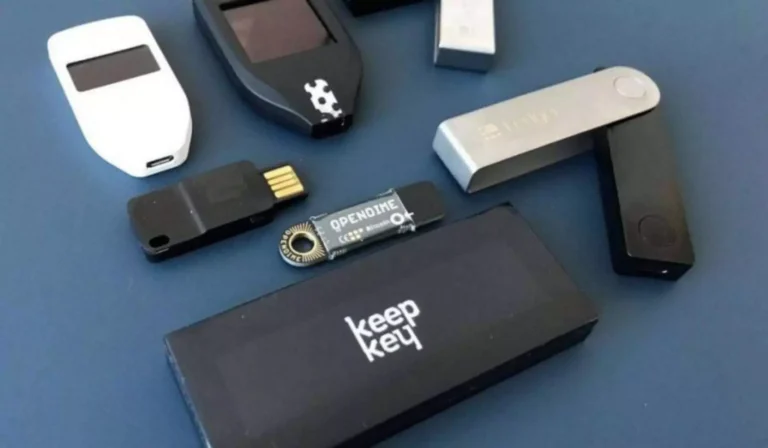Many cryptocurrency buyers want to earn an annual yield on their holdings, much like interest rates on a traditional savings account or a certificates of deposit. Liquidity mining is doubtless considered one of the hottest strategies to achieve this aim. In liquidity mining, you enable decentralized buying and selling exchanges to make use of your crypto tokens as a supply of liquidity. In return, you’ll be able to earn an annual share yield (APY) within the range of double-digit or even triple-digit percentages.
What Is Liquidity Mining And Where To Mine It? – CoinGape
What Is Liquidity Mining And Where To Mine It?.
Posted: Mon, 18 Mar 2024 07:00:00 GMT [source]
This is done through the use of their liquidity pool tokens to take part in numerous DeFi activities, such as lending, borrowing, or trading. Crypto assets are stored into a sensible contract-based liquidity pool like ETH/USD by investors often recognized as yield farmers, and the apply is named Yield Farming. These tokens may be borrowed for margin buying and selling by customers of the lending platform.
Staking Vs Yield Farming Vs Liquidity Mining: Key Differences
Exchanges obtain liquidity, LPs fees, and end-users have the ability to commerce in a decentralized trend. Users can generate competitive yields on two forms of crypto in an easy, secure and transparent method. Participating in liquidity mining is a technically complex process, and you might feel that the funding required is too nice. Doing it on Cake DeFi helps to ease that course of with our simple and safe service. Liquidity mining is a singular way to earn passive revenue while offering liquidity to a platform.
The protocol equally distributes the native tokens to all energetic customers and early community members. Since liquidity mining incentivizes participation through rewards, the DEXs native token can normally see some appreciation from the inflow of capital into the protocol. This participation strategy becomes increasingly attractive to developers and their innovators in the house of DeFi. These further incentives make liquidity mining even more attractive as users can choose to have voting rights on the protocol and earn even more passive income.
Dangers Related To Liquidity Mining
Developers utilizing this model incentivize group members who market the project. To get governance tokens, interested individuals need to advertise the DeFi platform or protocol. So, as an investor, make certain to carry out your due diligence before staking your assets into liquidity swimming pools. That will shield you towards any type of hacks and exploitation of protocols. Also, be sure that you spend money on projects continually audited by impartial individuals and companies.
This would additionally entitle them to a fifth of the entire rewards that are distributed to LPs. You hold your coins, and the blockchain protocol takes care of the remainder. Additionally, staking plays a significant function in sustaining network safety, making it a favored selection for so much of blockchain projects. Yield farmers earn further cryptocurrency by receiving a portion of the charges generated by the DeFi protocol they are taking part in. These fees are typically paid within the form of the cryptocurrency asset they are farming. Now it’s lastly time to pick the quantity of Ethereum you wish to lock up, which is mechanically matched by some Tether tokens.

It refers to trading cryptos on exchanges without considerably affecting the assets’ prices. Yield farming entails extra handwork than different methods if all processes are carried out accurately. Cryptocurrencies invested by the participant are also concerned in these processes, and to realize liquidity, yield farming entails multiple blockchains, which positively increases the dangers. Yield farming is a broader and way more complex strategy that includes liquidity mining and other areas, such as investing in credit protocols to concern crypto loans to different customers. Furthermore, liquidity mining, as we’ve already established, generates passive revenue by supplying liquidity to DeFi swimming pools.
Liquidity Mining Vs Yield Farming: Understanding The Difference
This is something that can occur when the value of tokens dramatically modifications whereas they’re locked up. Essentially, you would purchase the cash for a value of $10 per piece, and lock them up. This does not include any cash you may have obtained as a reward, of course. If you resolve to withdraw the cash before their price recovers, you’ll experience impermanent loss. You can offset this threat with the gains you acquire from liquidity mining. This is why it is best to lock up solely these cash you propose to maintain locked up as a long-term funding.

Check our Transparency Page for data on pool addresses, total liquidity, and rewards. Earn attractive yields on two kinds of crypto and get rewards every 12 hours. All you have to do is connect your non-custodial (self-custody) pockets to a DEX pool and ship your tokens.
Exit Strategy
To yield a farm, a person must have some cryptocurrency to lend or borrow and a compatible DeFi platform. To liquidity mine, a person needs to offer liquidity to a DEX and have appropriate tokens. As cryptocurrency continues to realize popularity, yield farming has emerged as a promising investment alternative within the decentralized finance (DeFi) area. To get began with yield farming, an investor would first need to amass a cryptocurrency asset that is suitable with DeFi protocols, corresponding to Ethereum or Binance Smart Chain. Once they’ve acquired the asset, they would then must deposit it into a DeFi protocol, similar to a liquidity pool. Staking entails locking up your property on a blockchain network to secure it and earn rewards.
If an asset throughout the LP of choice loses or positive aspects too much value after being deposited, the user is at risk of not profiting or even shedding money. For instance, Ethereum can double in worth inside 5 days however the fees granted whereas farming it will not even cover half of what one would have made by HODLing. The authors of this content material and members of Nansen could additionally be participating or invested in some of the protocols or tokens mentioned herein. The foregoing assertion acts as a disclosure of potential conflicts of interest and isn’t a recommendation to purchase or put money into any token or participate in any protocol. Nansen doesn’t suggest any explicit course of action in relation to any token or protocol.

By staking your belongings, you might be primarily “locking” them up, making it harder for unhealthy actors to disrupt the network’s consensus mechanism. This increased security helps to prevent potential attacks or hacks on the community, making it a safer and extra https://www.xcritical.com/ reliable investment option. Simply put, staking is the process of holding a particular amount of cryptocurrency in a wallet or trade account, after which using that steadiness to support the network.
This makes it a beautiful selection for these who choose a more regular path to earning from their assets. Staking is relatively easy and simple, as it entails holding your digital belongings in a wallet. Yield farming and liquidity mining, however, are more complex, as they involve shifting your digital property between completely different liquidity swimming pools or providing liquidity to those swimming pools. Additionally, liquidity mining could additionally be topic to external risks corresponding to regulatory adjustments, market manipulation, and flash mortgage assaults.
Regulatory changes can impact the legality of liquidity mining and should result in the closure of liquidity swimming pools. Market manipulation may cause sudden price fluctuations, leading to losses for liquidity suppliers. Flash mortgage attacks, where hackers exploit momentary entry to giant amounts of capital to control the market, can also end in significant losses for buyers.

Keeping every thing explained above in thoughts, we come to liquidity mining. To put it merely, it’s a term used for getting rewards in trade for offering liquidity. In mid-2020, the crypto business saw a rise of a development that changed the way individuals use digital currencies. The trend in question was decentralized finance (DeFi), which opened new doors to crypto customers. DeFi supplied a type of digital banking through using cryptocurrency, which offered equal opportunities to everyone.
How Precisely Does Yield Farming Work?
These tokens are then utilized by decentralized exchanges to settle token swaps. Meanwhile, token providers get rewards for offering their crypto, which come from swap charges. Before such an organisation of monetary relations as decentralised finance emerged, crypto assets liquidity mining have been mostly intensively traded or held to achieve revenue from their value development.
It’s necessary to contemplate your liquidity wants before selecting to stake your assets. While staking can offer many advantages, it’s important to know the potential dangers involved. Compared to different investment strategies, staking requires considerably much less power consumption. This is as a end result of staking doesn’t require the usage of highly effective computing gear like mining does.
Leave a Reply